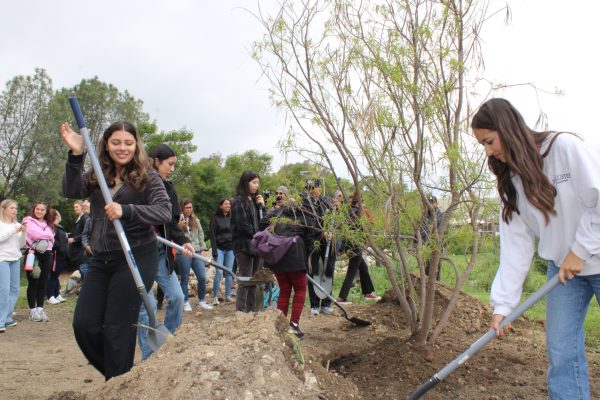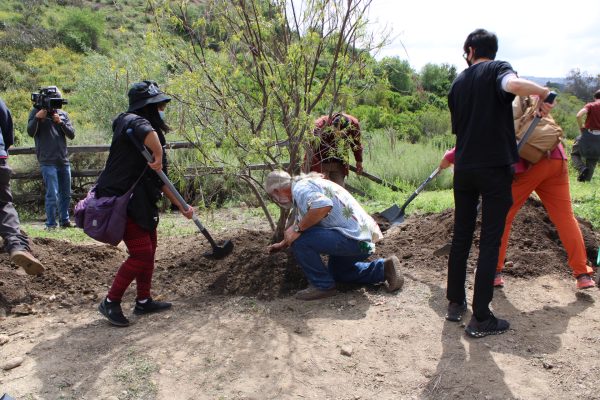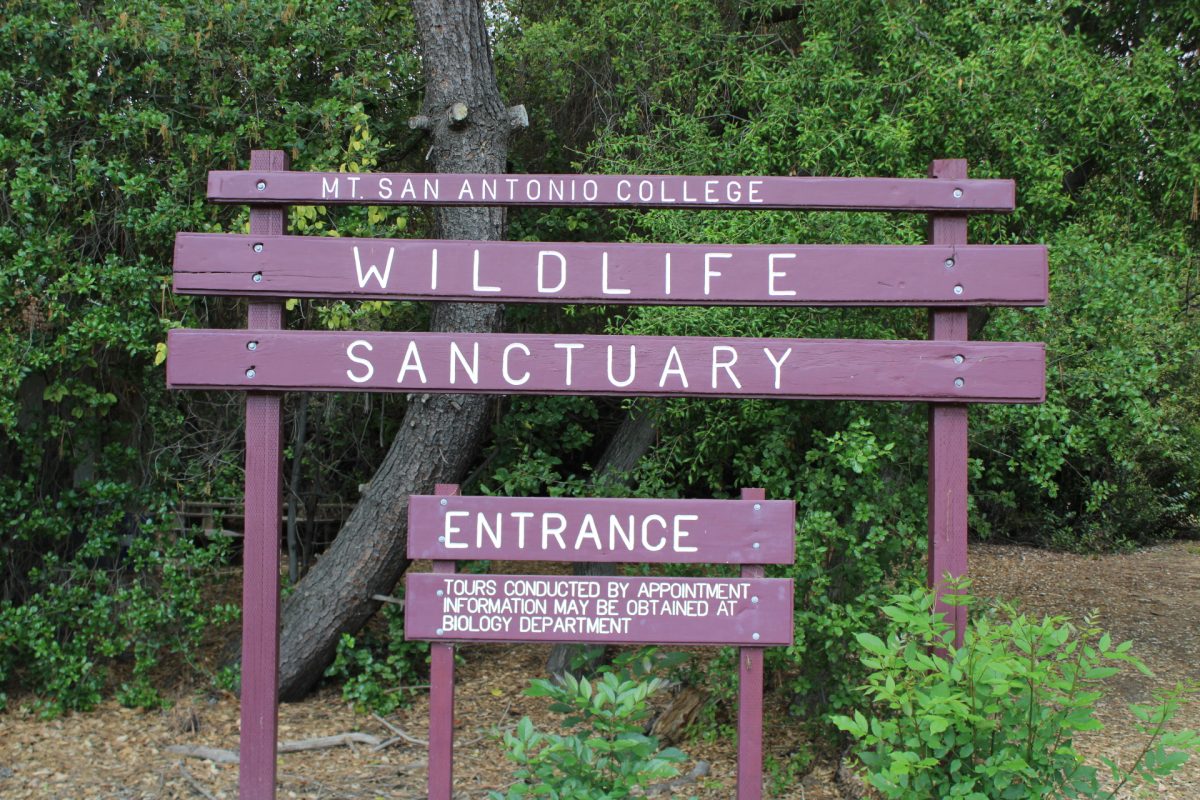On Friday, April 26, students gathered at the Wildlife Sanctuary to plant a tree in celebration of Arbor Day.
The event was hosted by Wildlife Sanctuary co-director, Mark Cooper and coordinated by the Mt. SAC sustainability director, Eera Babtiwale.
E.A.G.L.E., a campus club raising awareness about climate change, conservation and sustainability was there to sponsor the event. The club was entrusted with handing out seed bombs.
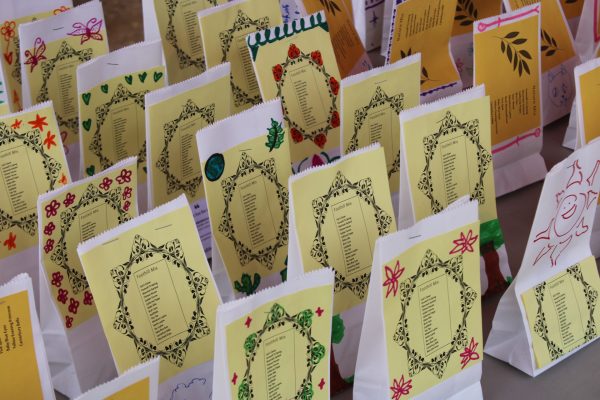
These seed bombs, whether you chose the nature or foothill mixture, contained various seeds from native plants. The seed bombs can be planted carefully in a flower bed, or thrown casually in your front yard.
Once students were signed in, Cooper led them to the Peterson Amphitheater where he spoke about the history of the Wildlife Sanctuary.
The Wildlife Sanctuary began with Bill Hawkins and just 10 acres in 1965. Its purpose was to conserve and educate. Now, the sanctuary sprawls out at 26 acres, with Cooper and Tyler Filisk as co-directors. The sanctuary lives up to its intended purpose, harboring endangered species like the gnatcatcher and conducting tours for those interested.
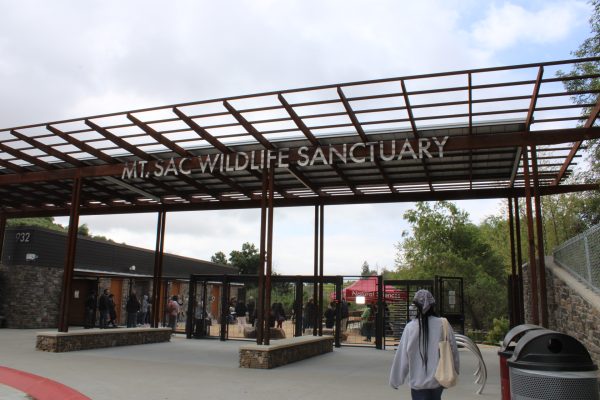
Another aspect of the Wildlife Sanctuary, spiritually rather than geographically, is the West Parcel Habitat Restoration project across the street, off Grand Avenue. Originally, the land was going to be developed for solar panels. Now, it’s used solely for preservation of native species.
The newest addition to the conservation efforts of Mt. SAC is Buzzard Peak, atop Mount San Antonio. These 74 acres of undeveloped land were purchased by the school and meant to stay that way.
Babtiwale mentioned her hope for the sanctuary to become more accessible to visitors, so that everyone could enjoy its serenity and learn about local biodiversity.
“So, this is just another way to welcome people in, let them know that this is theirs as well,” Babtiwale said. “That it’s not a tucked away oasis that nobody knows about anymore. It’s actually an oasis for everybody to enjoy.”
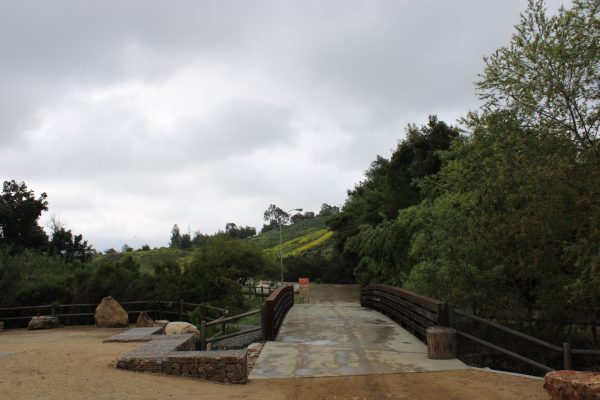
After Cooper’s history lesson, Babtiwale spoke about the importance of today’s tree planting and what it means to a campus like Mt. SAC.
Mt. SAC has a massive carbon footprint. To combat this, there is an inventory of over 3,000 trees which sequester 25 tons of carbon dioxide. This tree inventory has allowed Mt. SAC to become a designated tree campus, granted by the Arbor Day Foundation.
“I mean, they’re doing so much work in the background,” Babtiwale said. “They’re, again, capturing the carbon that we emit as an institution. Not all of it, but a significant amount of it…that’s huge.”
The tree that was planted is a desert willow. It’s meant to mark the beginning of the development for the new desert habitat in the Wildlife Sanctuary. There are plans for the sanctuary to include different sections which represent all the various biomes California has.
After the organizers informed everyone about the significance of the day’s celebration, it was time to plant the tree.
The desert willow sat in a hole in the ground as people crowded around it. Cooper, and former Wildlife Sanctuary director and amphitheater namesake, Craig Peterson were the first to shovel.
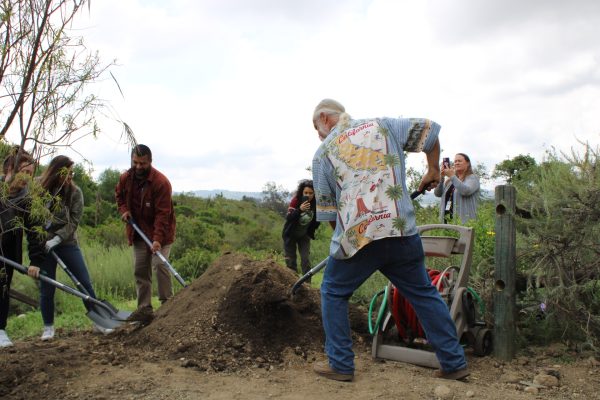
The piles of fresh dirt fell from the spades to the roots of the tree, signaling a commencement of the Arbor Day celebration. Cooper encouraged attendees to join in the moment. Shovels were grabbed and passed around. Dirt was moved from the great mounds beside the tree and into the hole where it stood.
Once the desert willow was snug in its new home, the crowd was thanked for attending and told that a tour of the Wildlife Sanctuary would commence for anyone interested.
With a new addition to the tree inventory and new group of Wildlife Sanctuary visitors, Arbor Day at Mt. SAC was a success.
